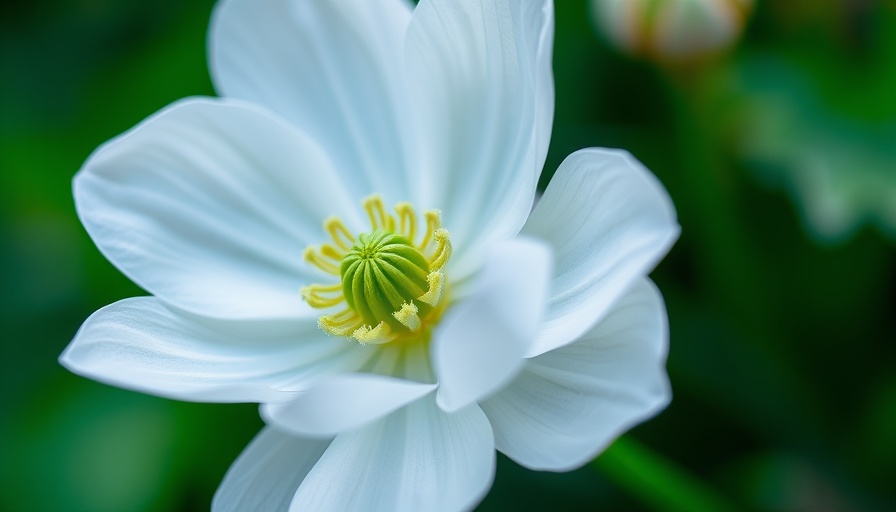
Understanding the Candle Anemone
The candle anemone, scientifically known as Anemone cylindrica, is a perennial plant native to various regions across Canada and North America. Often overlooked in gardens, this plant is more than a mere backdrop; its delicate white flowers complement a lush mat of green foliage, making it an excellent textural addition to a flower garden. Imagine an inviting meadow with its soft, fluffy seed heads dancing in the wind – it’s a sight that can effortlessly brighten any landscape.
Why Choose Candle Anemone for Your Garden?
Candle anemones prove to be a fantastic choice for a range of landscaping ideas. They thrive in USDA hardiness zones 3-8, making them versatile for many gardeners. Known for their resilience, these plants require low water and minimal maintenance, which is ideal for busy individuals or those looking to adopt more sustainable gardening practices.
Planting and Care: Key Steps
To successfully grow candle anemones, it’s essential to understand their unique needs. Here are some essential gardening tips:
- Soil Requirements: Candle anemones prefer sandy or loamy soils that drain well, with a pH of 6.0 to 8.5.
- Sunlight: They adapt well to both full sun and partial shade, allowing flexibility in garden design.
- Spacing: Plant them about 3-6 inches apart to enable their sprawling nature while avoiding overcrowding.
- Water Needs: These perennials are drought resistant once established, making them perfect for organic gardening.
Propagation and Maintenance
Candle anemones can be propagated easily through seeds or root ball transplants. For the best results, surface sow seeds in late winter or early spring. This process can yield lush growth that contributes to a vibrant ecosystem, attracting beneficial pollinators and enhancing garden health.
Pests and Diseases: Keeping Your Plants Healthy
While generally hardy, candle anemones can occasionally face challenges from common garden pests such as aphids or powdery mildew. Here are practical insights for pest management:
- Regular Monitoring: Inspect plants frequently for early signs of infestation or disease.
- Natural Remedies: Consider using organic pesticides for pest control to maintain a healthy garden.
- Companion Planting: Engage in companion planting, pairing candle anemones with plants that repel pests naturally.
Integrating Candle Anemones into Your Landscape
Adding candle anemones to your garden can elevate your outdoor space. They work beautifully as part of garden borders or mixed flower beds, providing a gentle contrast to more vibrant flora. Their understated beauty offers a soothing aesthetic that can transform an area into a tranquil retreat.
Conclusion: Your Next Gardening Project Awaits!
Incorporating candle anemones into your garden can offer numerous benefits, from their rustic beauty to their low-maintenance needs. As you embark on your next gardening project, consider the versatile and delightful qualities of Anemone cylindrica. Explore the possibilities they bring for both visual appeal and ecological balance in your outdoor living space!
 Add Row
Add Row  Add
Add 




Write A Comment